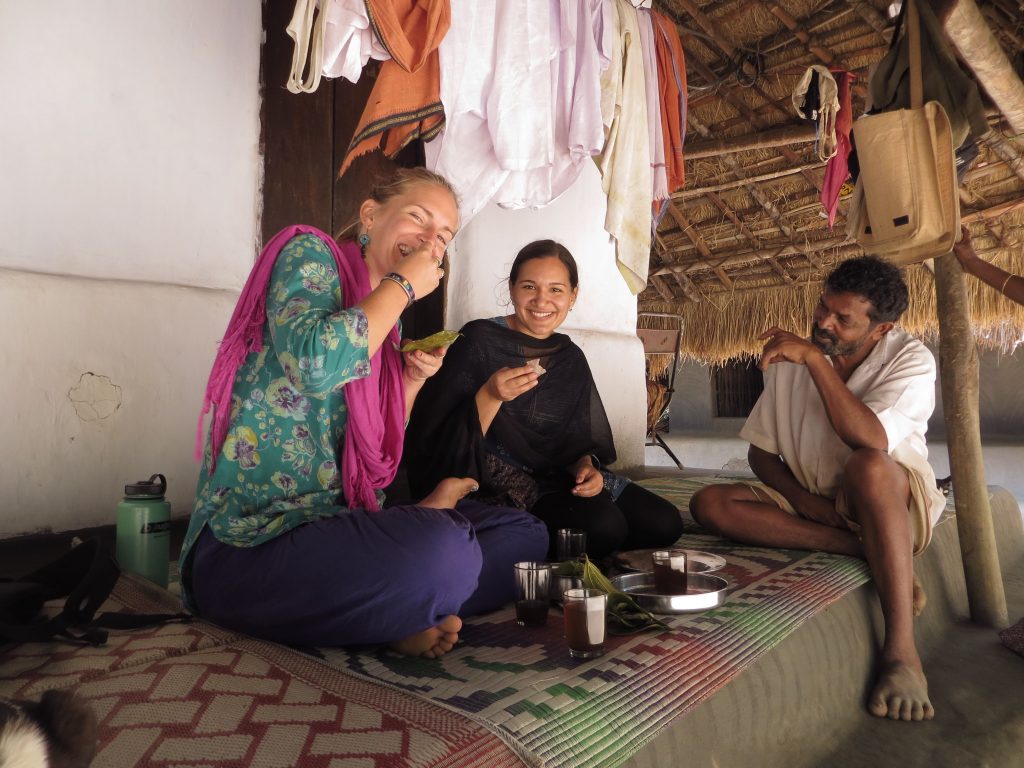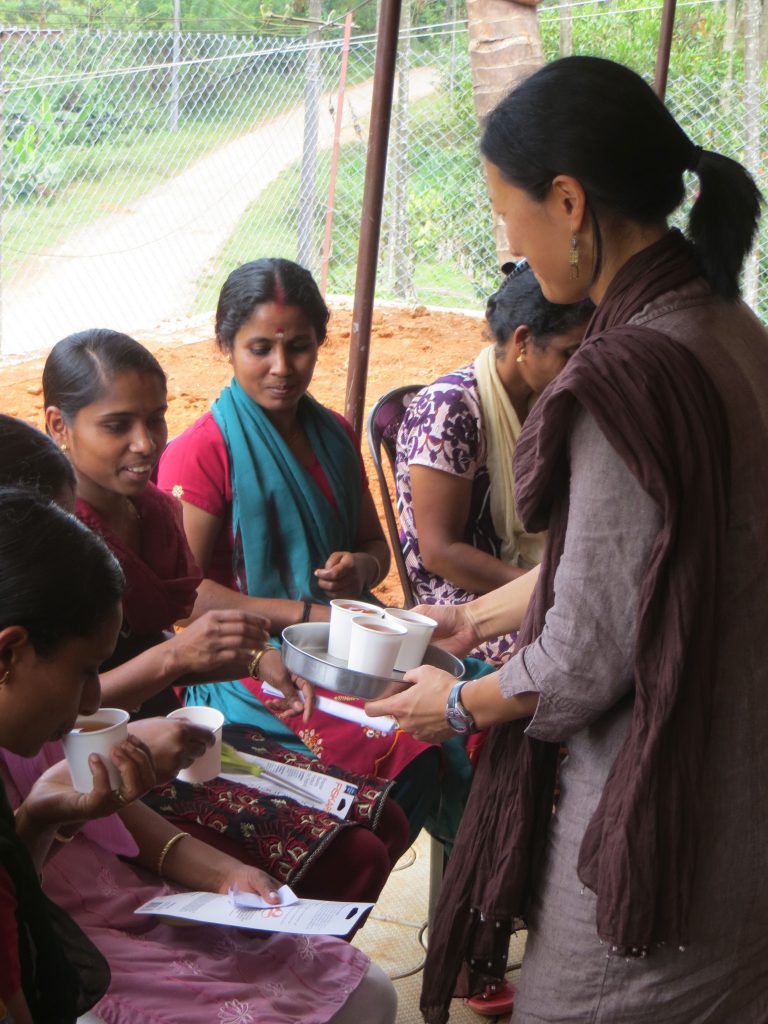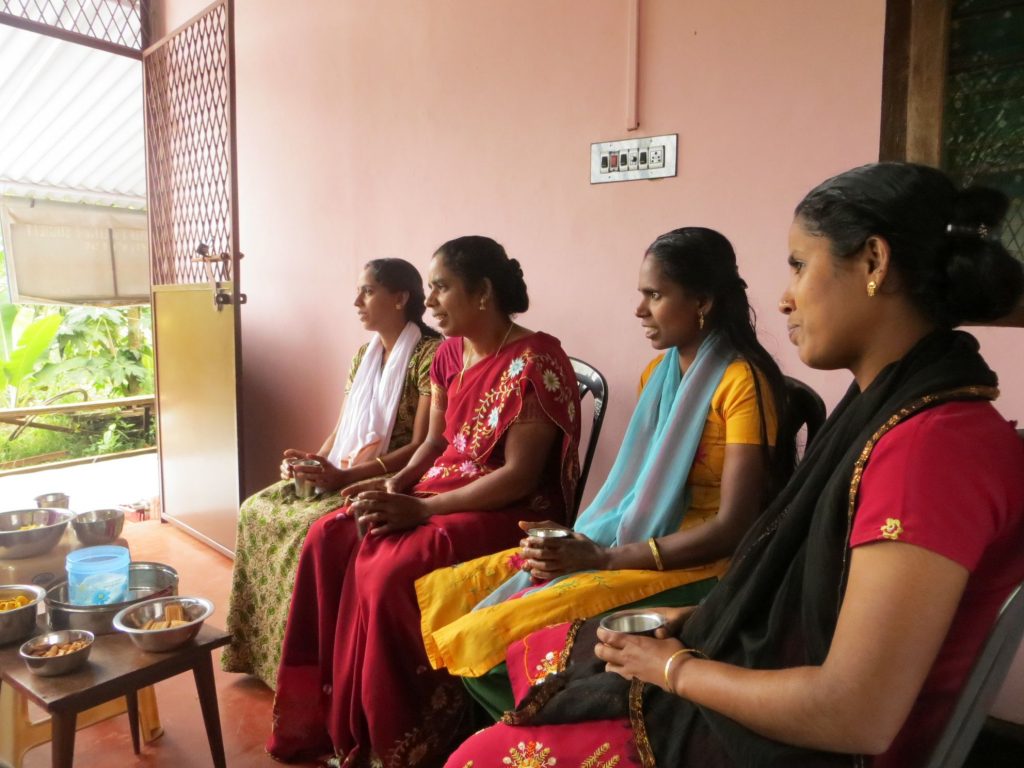
After coming in from the snow on a gloomy winter day, there is nothing better than getting cozy under a warm blanket with a hot beverage, the steam warming your face and the mug, your hands. There are a variety of hot beverages to choose from; hot cocoa, coffee, tea. Being married to an Indian man, our hot drink of choice is chai, which translates to ‘tea’ in Hindi, derived from the Mandarin word for tea, ch’a. Some of you may have had chai tea from a café, but there’s nothing like making it from scratch in your own kitchen.
Since much of India doesn’t experience a cold winter season, chai isn’t so much a warm treat after being in the cold. Chai is more of a social ritual, whether taking a break from work with your coworkers or greeting visitors, it is a welcome treat. I fondly remember my first few weeks in Wayanad. We spent a lot of time visiting all the different households to lay a foundation of trust, to let them know we were there to learn from them and hopefully use our resources to work with them to improve their quality of life. At each household we were always greeted with a small glass of chai and treats. It was especially important because we didn’t speak the same language, so it was a way to commune without speaking.

The history of this ritual dates back centuries. Before the British introduced black tea in India to compete with the monopoly China had on tea, kadha, the predecessor of modern chai, was an infusion of traditional spices and water. It has its roots in Ayurveda, the ancient system of medicine in India. There are many tenants of ayurveda, a holistic approach to healing. One of them is having a balanced diet based on one’s own individual constitution. The use of herbs and spices helped achieve this balance.
Like anything else in India, chai recipes vary from region to region. However, there are basic ingredients found in traditional chai; ginger, cardamom, cinnamon, and cloves. The addition of these spices goes beyond their taste. Ginger is known for its warming properties and it aids in digestion, cardamom is considered to have cooling effects and also aids digestion. Cinnamon, like ginger, has warming effects and can help with circulation. Cloves are believed to have antimicrobial and analgesic properties. Another tenant of Ayurveda is being mindful, enjoying the present. The ritual of drinking tea is about being in and appreciating the present moment.
After black tea was introduced to India in the early 1800s, it began being assimilated in to the chai mix. Wide adoption didn’t begin until the 1930’s when the British Tea Company encouraged workers in India to have tea breaks to increase sales. However, the highest quality tea was exported, and the lower quality tea was the one being sold within India. The addition of spices had another purpose, to make the tea taste better in addition to the aforementioned ayurvedic benefits.
Fast forward to present day and you cannot walk down a street without seeing a chai wallah, the tea delivery person, a rudimentary tea stand, or a fancy tea shop. Often served in little glass cups, it is a wonderful way to experience Indian culture and perhaps make a new friend.
As stated already, each region in India has unique chai preparations. Some of the more interesting variations are as follows:

- Kashmiri Chai, also known as noon chai or pink tea, is made with green tea leaves, milk, and a special blend of spices giving it its unique pink color.
- Kolkata Chai, aka Kullad Chai, is special not just because of the ingredients but how the chai is served. It is served in little earthen clay cups called, kullads. The clay does add a unique twist to the tea.
- Gujarati Chai is sometimes flavored with saffron, making it richer and more aromatic. Some households use mint or lemongrass in their chai.
The chai I had in Wayanad was quite sweet. It had a good amount of fresh milk and sugar with the spices. It was sweet with a hint of spice and, especially during the rainy season, felt like a warm hug.
Of course now you can find chai lattes or chai tea in Starbucks and other cafes throughout the world. However, I have yet to find a store that can match the taste of homemade chai, handed to you by a neighbor or a friend, being present in that moment. So, the next time you come in from the cold or are having friends over, I beseech you to make a pot of masala chai. If you are feeling adventurous, you can try out other ingredients, make your own unique blend, then sit back and enjoy.
Masala Chai Recipe: (Serves 3-4, depending on size of mug)
Ingredients needed:
- 4 C water
- Ginger (quantity depends on personal preference, I saw the more ginger, the better. Start with 1 inch piece and go from there)
- 1 inch piece Cinnamon bark
- 7-8 pods Cardamom, lightly crushed
- 1 tsp anise seeds
- ½ tsp black peppercorns
- 1 piece star anise
- 2 tsp Black tea
- Sugar to taste
- 1 C Milk
- Optional: mint, lemongrass
Method:
- Grate ginger and add into water along with all the whole spices and sugar and bring to a boil.
- Add black tea, and milk, lower heat and let the tea simmer for 4-5 minutes.
- Strain and enjoy!

Leave a Reply
You must be logged in to post a comment.